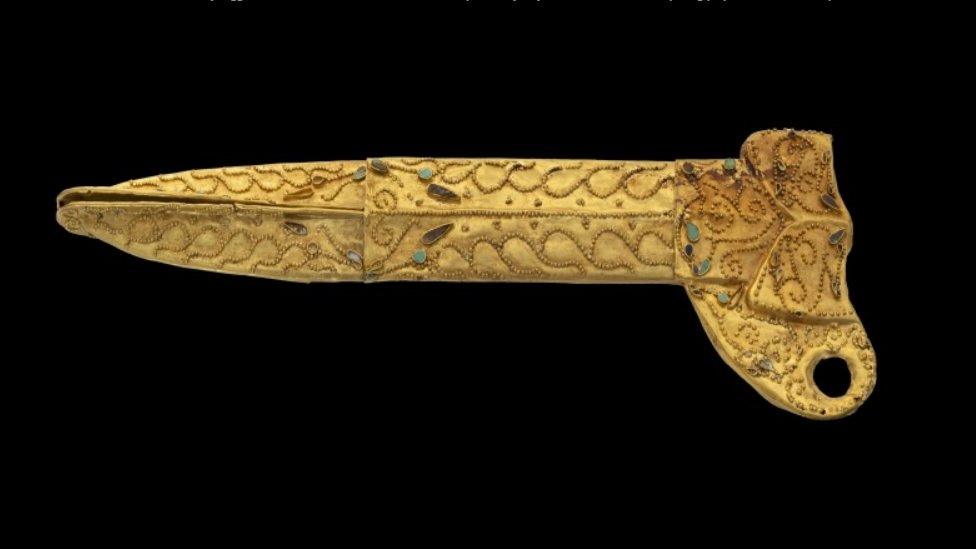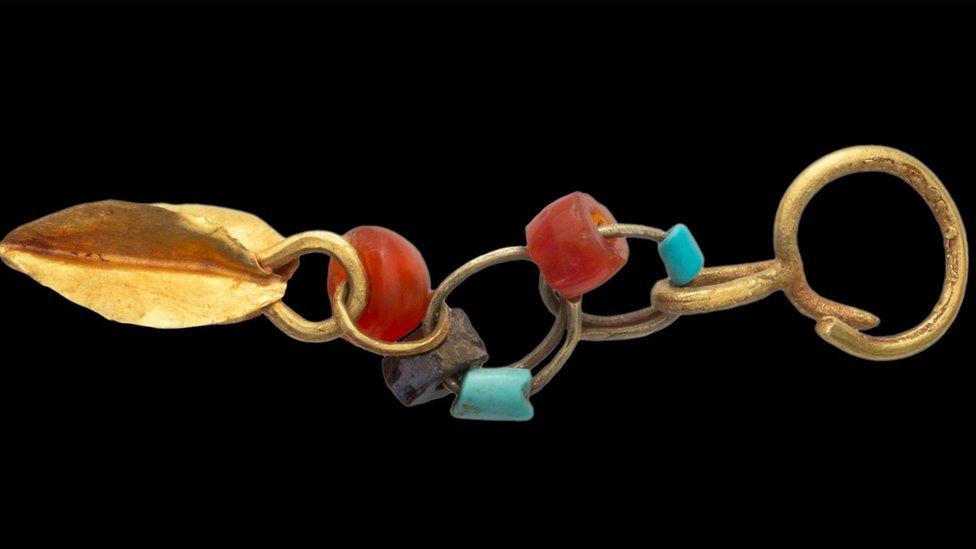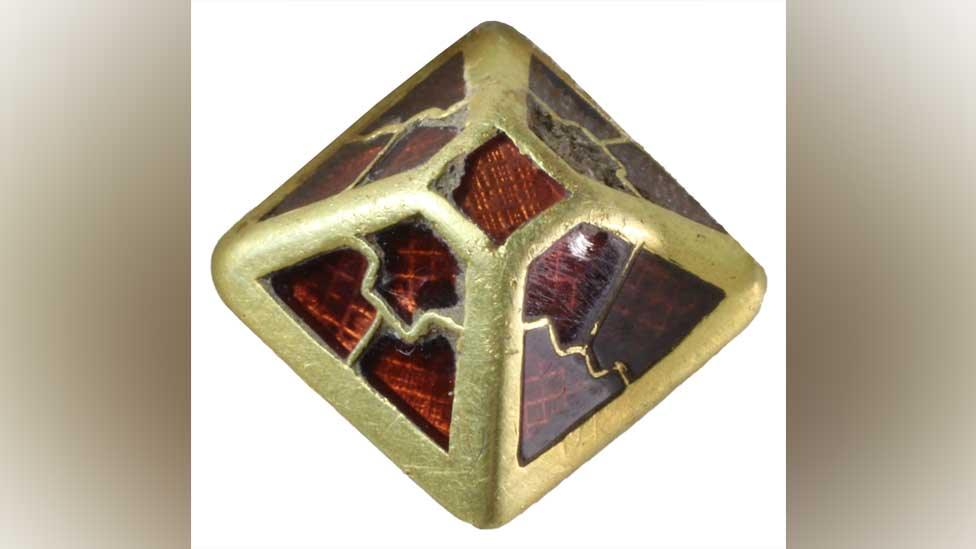Cambridge shows ancient gold Kazakh warrior treasures in UK first
- Published

Treasures from burial mounds of the Saka people of Kazakhstan will be on show in Cambridge
Gold artefacts belonging to ancient warriors buried about 2,700 years ago are being displayed in the UK for the first time.
The treasures from Saka burial mounds in East Kazakhstan will be on show at the Fitzwilliam Museum in Cambridge.
The Saka were nomadic people of Iranian origin.
Items including jewellery and horse harness ornaments will be displayed and researchers will be studying them using non-invasive technology.
Saka warriors and the "elite" were buried in mounds with their horses and treasures, but most have been looted over the years.

A gold stag inlaid with turquoise will be among items on show
However, archaeologists found the intact burial place of a teenage archer, aged about 18.
His grave had apparently been sheltered by a rockfall and artefacts found there in the past three years will be among those on show.

This dagger sheath has turquoise and lapis lazuli inlays
The young archer's burial mound is only the second intact example unearthed in the country and was discovered at the Eleke Sazy burial mounds in the east of Kazakhstan.
The remains of the first so-called "golden man" were found in the south of the country in 1969.
The Saka culture of central Asia flourished from about the 8th Century BC to the 3rd Century BC, and was largely unknown outside of Kazakhstan, the museum said.

This earring is made with beads and has a leaf arrow-shaped pendant
The Fitzwilliam exhibition will display finds from three burial complexes in eastern Kazakhstan - Berel, Shilikti and Eleke Sazy - and will include a reconstruction of the burial of the teenage archer.
The loaned artefacts will be on display thanks to a partnership between the museum and the East Kazakhstan Regional Museum of Local History, and are described as "incredibly important" by Fitzwilliam director Luke Syson.
Danial Akhmetov, governor of the East Kazakhstan region of the Republic of Kazakhstan, said: "This exhibition will present Kazakhstan's most outstanding archaeological discovery of recent years.
"It has been proven that the Saka created truly unique jewellery masterpieces, using technological processes that were advanced for their time, and constructed grandiose and exceptionally complex religious, funerary and memorial monuments," he said.
The "exceptional state of preservation" of the undisturbed archer's burial mound would bring new opportunities for scientists to study the "religion, world view and funeral rites of the early Saka people", he added.
Gold of The Great Steppe will open at the Fitzwilliam Museum on 28 September and run until 30 January.

Find BBC News: East of England on Facebook, external, Instagram, external and Twitter, external. If you have a story suggestion email eastofenglandnews@bbc.co.uk, external
Related topics
- Published8 August 2021

- Published1 August 2021

- Published24 March 2021
